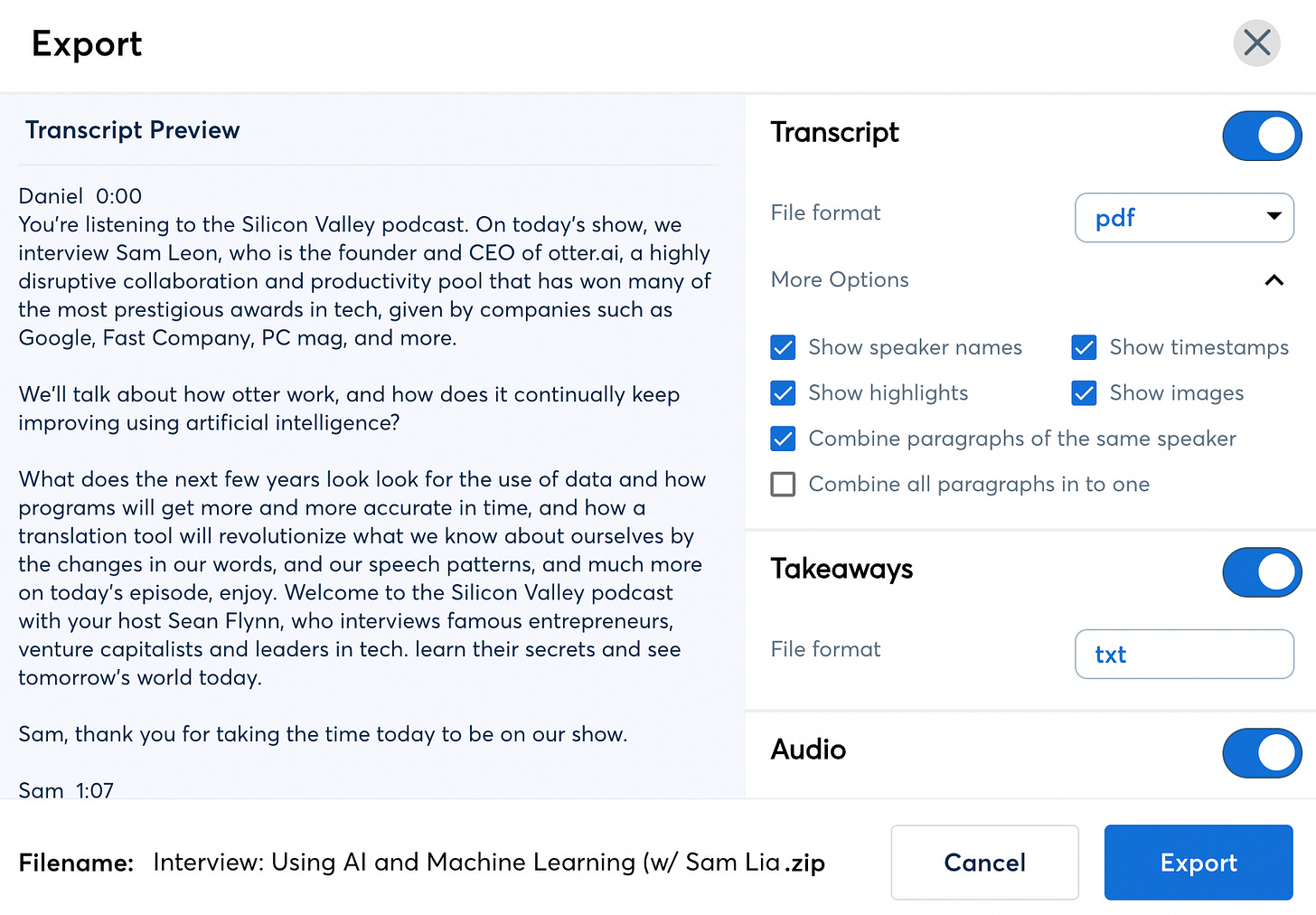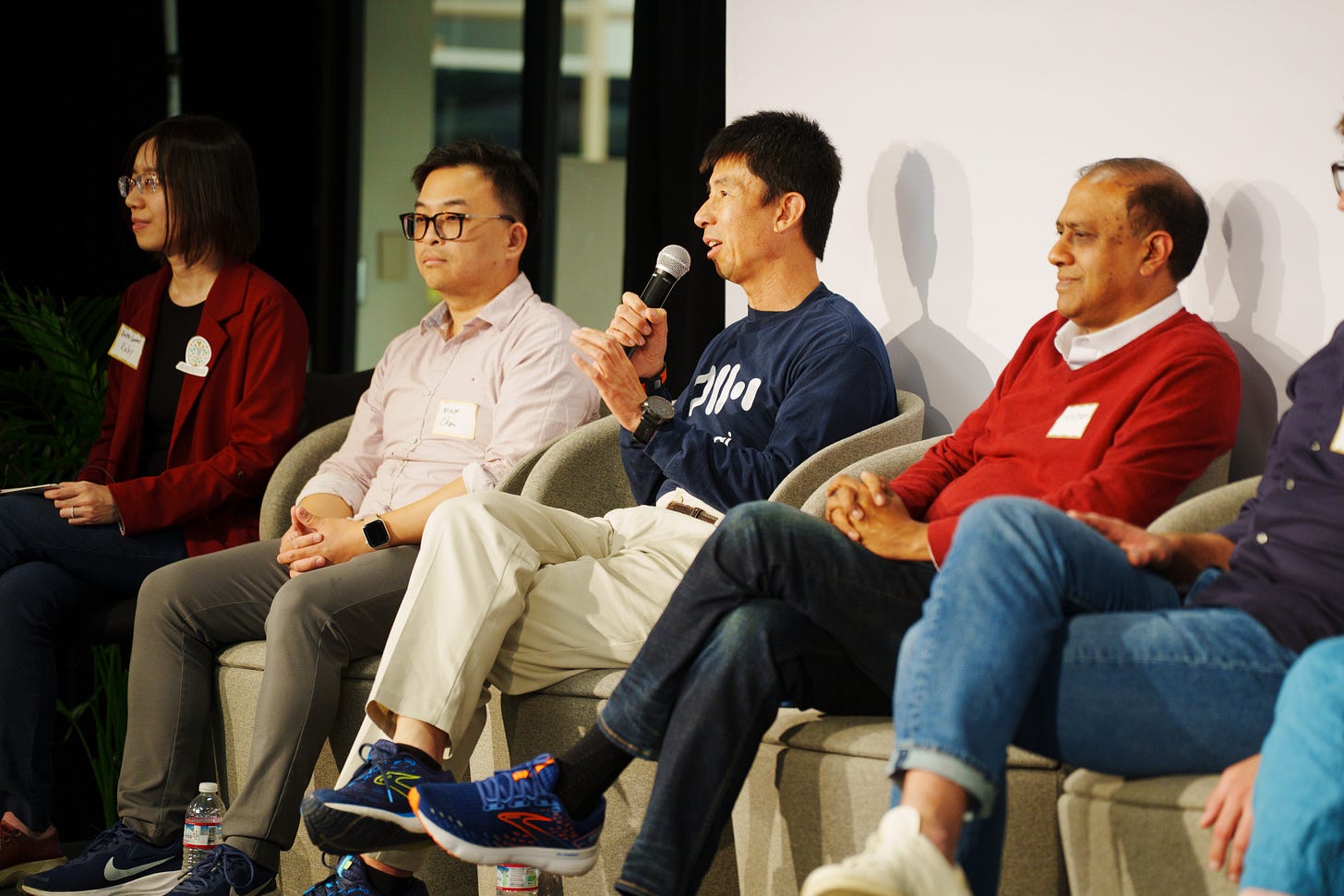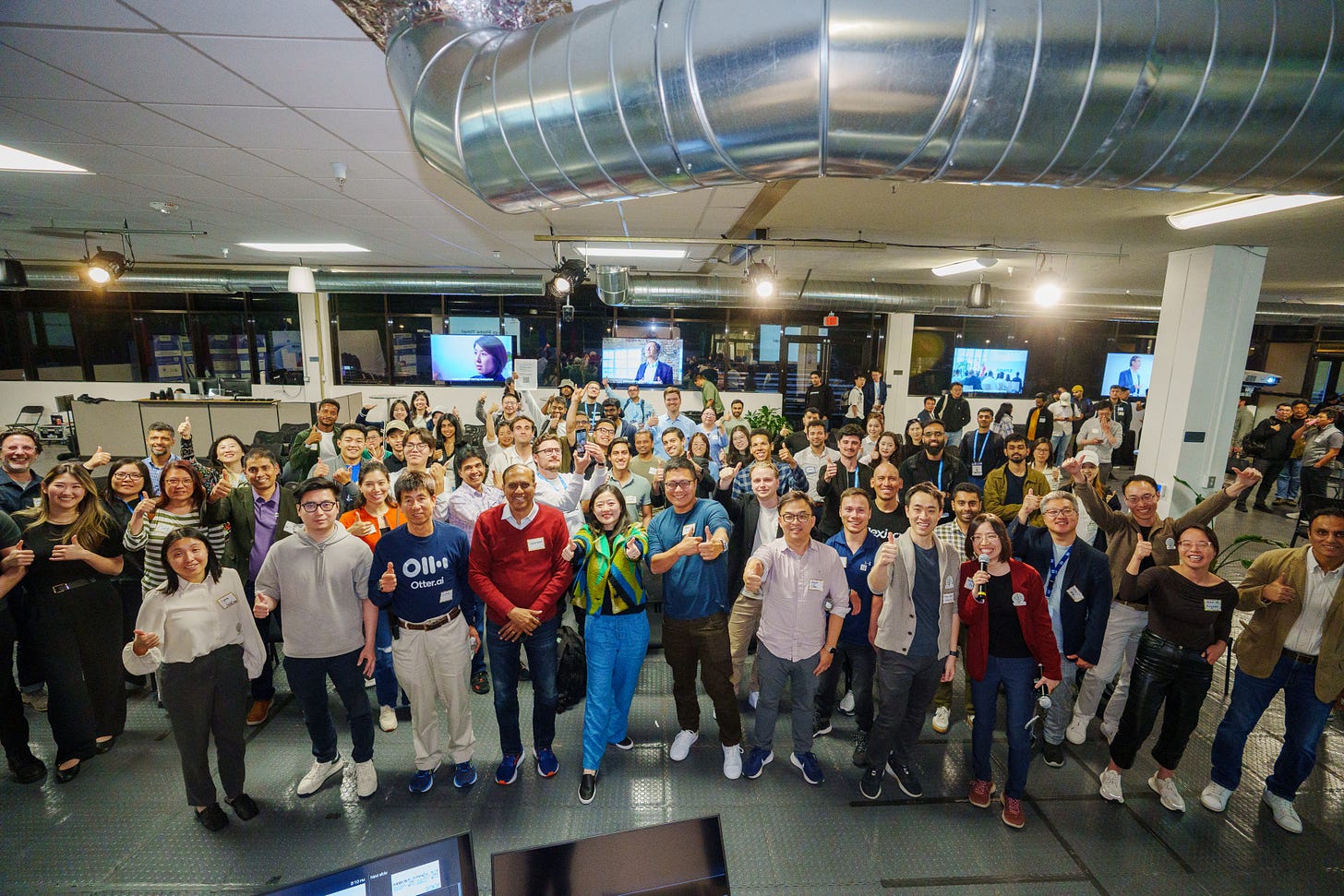The Otter.ai Playbook: Building a $100M Business from Conversations
Inside Sam Liang’s founder journey—how deep tech, product-led growth, and timing turned a simple idea into an enterprise staple
Introduction: Building for the Spoken World
Every founder dreams of building something so useful it blends seamlessly into daily life. For Sam, serial founder and CEO of Otter.ai, that meant solving a universal pain: the disconnect between what’s said in meetings and what’s actually remembered—or acted on. Without a single sales rep, Sam scaled Otter to $100M+ ARR, powered by smart virality, custom infrastructure, and data-driven enterprise adoption.
This blog distills key insights from Sam’s talks at SaaStr Summit, Linghang’s event, and EntreConnect’s SaaStr side event—highlighting lessons that resonate deeply with builders.
Let’s dive into how he built Otter—and what founders can learn from his journey.
🧬A Founder DNA Forged at Google & Alohar
🎓 Learning from David Cheriton
Sam’s entrepreneurial spark was ignited during his PhD under Professor David Cheriton—the legendary investor behind Google’s first $100K check. From day one, Cheriton encouraged him to:
“Think big, think different, and think about changing the world.”
📍Google: Shipping Impactful Products
In 2006, Sam joined Google to lead Location-Based Services for early mobile platforms. His team shipped location features on the first iPhone—despite the lack of GPS. The challenge became a catalyst, proving that technical constraints can fuel standout innovation.
🚀 Alohar Mobile: First Startup, First Exit
Craving the autonomy to innovate at speed, Sam left Google in 2010 to cofound Alohar Mobile, which specialized in real-time mobile behavior. Its acquisition by Autonavi (later Alibaba) gave him firsthand experience in building, monetizing, and exiting a deep tech product—while reinforcing key investor relationships that would shape his next chapter.
🧠 Identifying the Pain Point: The Memory Problem
“We retain only about 10% of what we hear after one week.”
That statistic shaped Sam’s vision for Otter.ai. Meetings, lectures, interviews—countless hours of valuable spoken information were slipping through the cracks.
In early 2016, he partnered with CTO Yun Fu to launch AISense (later Otter.ai) in Mountain View. Leveraging their deep expertise in AI and machine learning, they built a proprietary speech engine and released the first Otter app later that year.
While big tech offered basic speech-to-text, no one had solved the full workflow—capturing, summarizing, and sharing meeting insights in real time. Otter set out to do exactly that.
💡Fun fact: When choosing a name, Sam wanted something short, memorable, and symbolic. Otters are intelligent, have excellent memories, and hold hands—a natural metaphor for collaboration. Friendly and approachable, the name made advanced tech feel more human.
🔍 MVP Approach: Real-Time Transcription & Search
🎙️ Building In-House Speech Tech
Instead of relying on generic APIs, Sam doubled down on custom speech recognition—tuned for accent variations, background noise, and even Starbucks-level chatter. It was resource-intensive, but it enabled a generous free tier (600 minutes/month) and created a strong moat: differentiation through defensibility.
⚡ Rapid Iteration to Validate Core UX
Otter launched with a dead-simple promise: open your phone, record a conversation, and watch the transcript appear in real time. That immediate “wow” factor fueled viral growth—users eagerly shared transcribed lectures and interviews, turning Otter into its own best marketing engine.
📈 Growth Strategies That Worked: Bottom-Up & Strategic Partnerships
📰 Reporters as a Launchpad
Sam noticed journalists were paying $100+ per hour for human transcription. By offering a generous free tier, Otter quickly became indispensable to them. In return, many wrote about the product—turning into early evangelists and driving massive awareness with virtually no marketing spend.
📹 Embedding in Zoom
In 2017, Sam pitched a prototype to Zoom CEO Eric Yuan. Otter’s real-time accuracy—well ahead of big tech alternatives—won Eric over. From 2017 to 2020, Otter was embedded directly into Zoom, unlocking a powerful distribution channel to enterprise users. For founders, it’s a reminder of the leverage that comes from aligning with a larger platform.
🌍 COVID as a Catalyst
When the pandemic hit, remote work exploded—and so did Otter’s usage. The takeaway: while you can’t predict black swan events, you can build resilient infrastructure and be ready to scale when opportunity strikes.
🤝 Enterprise-Ready: Security, Reliability & Bottom-Up Expansion
🏢 From Consumer-Grade to CIO Sign-Off
Like Slack or Dropbox, Otter started with a bottom-up adoption strategy—individuals and small teams used it organically. As usage spread, companies sought centralized billing and enterprise-grade security. By the time IT took notice, hundreds (sometimes thousands) of employees were already using Otter daily.
🔐 Data Privacy as a Dealmaker
Enterprise buyers demand serious data protection. Otter’s stance: treat every conversation as confidential by default. Early investment in encryption, access controls, and compliance wasn’t glamorous—but it was critical to unlocking large-scale contracts.
📈 Turning Usage into Upsell
Otter quietly tracked adoption using email domains and calendar data to map team-level engagement. Instead of cold outbound, they let product usage surface the warmest leads—timing enterprise pitches when value was already proven.
🤖 The Tech Roadmap: From Transcription to AI Voice Agents
🗣️ Speaker Diarization & Live Summaries
Accurately tagging who said what is essential for turning conversations into action. Otter then layered on real-time summarization, using large language models to answer questions like, “What was the budget we discussed earlier?”
🧠 Spoken Language Models > Text-Based LLMs
Most LLMs—like GPT-4—are trained on written text, which doesn’t reflect the messy, interrupt-driven flow of real conversations. Otter’s edge? Millions of hours of meeting audio, fueling models purpose-built for spoken language understanding.
🚀 Next: Voice Agents & AI Avatars
Sam envisions a future where Otter doesn’t just listen—it talks. Imagine a sales AI that fields inbound leads or a recruiting AI that screens candidates. For founders, the takeaway is clear: start with one high-value use case, but build with long-term optionality in mind.
📝 Overcoming Key Challenges
🎯Accuracy vs. “Good Enough”
90% might sound good enough—but Sam’s team pushes for edge-case precision: accents, acronyms, multilingual speech. In specialized domains, that extra 10% turns a cool demo into a mission-critical product.
📊 Quality Metrics and Customer Satisfaction
While error rates don’t always map cleanly to revenue, user surveys consistently highlight accuracy as a top concern. Tracking hard-to-quantify issues—like voice misinterpretation—is essential for meaningful iteration.
🔑 Bottom-Up Adoption with Confidential Data
People worry about security when it comes to meeting transcripts. Sam points out that Slack and Dropbox faced the same scrutiny—and overcame it by offering robust enterprise controls.
💡 Customer > Competitor Focus
Rather than chase stealthy AI breakthroughs, Sam’s team dogfoods Otter daily—shipping fast and staying close to user pain. The mindset: obsess over your customers, not your competitors.
🚀 Closing: The Founder’s Perspective
Sam’s journey reveals a powerful playbook for founders and builders:
Identify a large, underserved pain point (e.g., lost meeting knowledge)
Invest deeply in technical differentiation (custom, in-house speech recognition)
Drive adoption through viral loops (journalists, free tier) and strategic partners (Zoom)
Obsess over user feedback and build for secure, enterprise-ready scale
Keep the long-term vision in sight—transcription is just the starting point for AI that can listen, summarize, and eventually speak on your behalf
Whether you're a first-time founder or seasoned builder, Otter.ai’s path offers clear lessons for going from 0 to 1. In a remote, conversation-heavy world, transforming spoken information isn’t just useful—it’s a powerful way to reinvent how we work and collaborate.
Forwarded this email? Subscribe here for more
This is EntreConnect’s newsletter, your go-to for upcoming events, exclusive opportunities, and insider insights on entrepreneurship, growth strategies, and industry trends.
🗓️ Upcoming Events
Follow us on Linkedin and Luma to stay updated on future events!
June 24, San Francisco, CA | Super AI Agents on the Rise with Genspark, Dell Capital, AIMon, OpenWay AI & Wayfound AI.
June 26, Mountain View, CA | AI & Agents: Most Exciting Use Cases & Opportunity for Enterprise Tech. Join us for a provocative, content-rich presentation and Q&A with Muddu Sudhakar, unicorn founder and CEO of Aisera
July 18, New York, NY | 2025 AI and Sustainability Global Summit. EntreConnect is thrilled to co-host with Columbia University, NYU & Gemi.AI — advancing AI for Good with clear purpose, strong guardrails, and real-world impact.
July 27, San Jose, CA | Startup Pitch Salon | Investor Feedback + Audience Vote. Join us with top early-stage founders, seasoned investors, and engaged audiences for an event of insight, feedback, and community.
July 30, San Francisco, CA | Infrastructure & Agentic Workflows with C-suite from MongoDB, Databricks, AppsFlyer, Alluxio, @AWS GenAI Loft
🍸 In Case You Missed It
June 13 – How Agents Will Revolutionize the Future of Data. We brought together 500+ founders, builders, and operators for a high-energy evening co-hosted by EntreConnect, Data for AI, and Techstars Startup Weekend San Francisco AI at the AWS Builder Loft.












